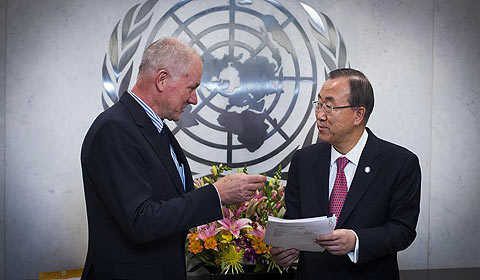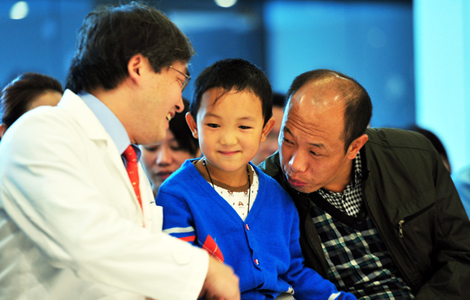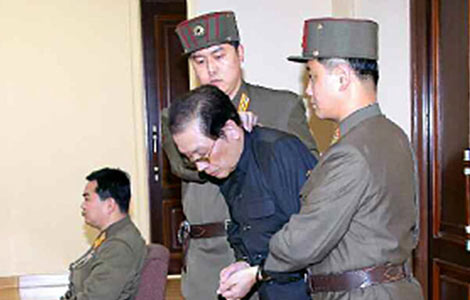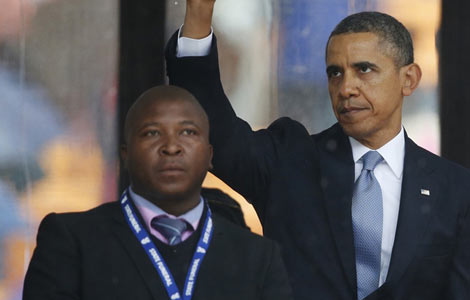
New media such as smartphone apps are preserving China's local vernaculars, which are otherwise falling into disuse among the younger generation
Computer codes are deciphering a lifeline for China's dying dialects.
The digitalization of dialects via smartphone apps and other new media is reconnecting the tech-savvy younger generation with the ancient vernaculars they're being slowly pulled away from by modernization, urbanization and globalization.
The low-budget iOS and Android game Crazy Dialects, for instance, has 10 million players.
Users listen to a phrase spoken in one of the country's incalculable dialects and define - usually, guess - their meanings by multiple choice.
They start with Beijing dialect, which is a slightly slurred tweak on Putonghua, the standardized version of Mandarin. They then advance to the somewhat less standard Hebei and Tianjin dialects. From there, they move on to other increasingly distant-from-Putonghua parlances from 20 other provinces.
They don't have the database for the entire nation. Creating it would be an unprecedented task.
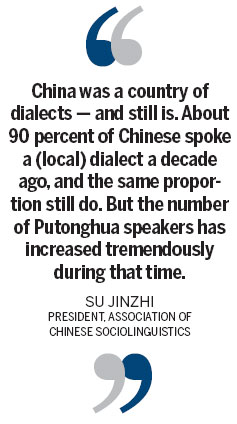
Only the most successful gamers can rise to the newly-added Zhejiang dialect level, which is at least as difficult to beat as it is to reach.
China's dialects are generally dichotomized as Mandarin-based and non-Mandarin based. Putonghua is, in fact, an auxiliary Mandarin-based dialect that's nobody's mother tongue. Rather, it is a standardization of Mandarin dialects developed from a family of similar parlances from eight linguistic regions, including Beijing, Northeast China, Jianghuai and Southwest China.
It was declared the sole official language in 1955 to enable the entire nation to better understand one another. Other dialects, such as Hakka and Cantonese, don't share the rules of Mandarin or the family that sired it.
While there are broad branches of China's linguistic tree, every city, county, town and village sprouts progressively idiosyncratic offshoots. So, the nation's dialects are as numerous as leaves and provide plenty of data for such apps as Crazy Dialects.
"We had so much fun designing it," developer Zhu Weibo says.
"We laughed often when we heard the strange expressions. It was fun, even though we worked through the nights."
The 34-year-old came up with the idea and toiled with four colleagues for three weeks to develop the game.
"I discovered how much fun a different dialect could bring," he says.
"I was confident we'd get many users and wanted to display the diversity of dialects."
The developers grabbed sound bites by asking friends from across the country to find native speakers in their respective locales.
"Families should speak the same dialect," Zhu says, noting that this is a criterion for finding native speakers - the speaker should be brought up there and have family members who speak the same dialect.
"We had a college student record Hubei dialect and a granny record a local Zhejiang dialect. We told them: 'Your words could be heard across the country'."
Zhu and his wife recorded part of the Jiangxi dialect.
The game that started as a side project now rakes in 2 million yuan ($328,000; 240,000 euros) in monthly advertising revenue.
And one in three overseas players make in-app purchases.
"I believe (overseas Chinese) are missing something they took for granted back home," Zhu says.
Zhu says he has been inundated with about 10,000 responses. Most are users' calls to add their hometowns' dialects.
"Dialects are the key to the game's popularity," Zhu says.
And dialects are used by about 30 percent of China's Siri-like digital speech assistant Wormhole's 22 million customers.
"We hope it will become customized enough that whatever dialect you speak to it in, it will respond in the same one," the company's co-founder Wang Xiaoyi says.
Wormhole used only Putonghua when it launched last March. "Requests for dialects started piling up," Wang says.
"It's persistently the No 1 demand. So we can't ignore it."
They aggregated data from source companies and created the dialect function.
"But we always need more dialectal data."
Wang uses the app she developed in the parlance of Henan province, although she is a Hunan native. She chooses Henan dialect because she finds the tones interesting.
"I like the way it warps the ends of syllables," she says.
The app's users average age is 30. Most learned Putonghua in school but speak dialects at home and with local friends.
Some fear Putonghua will - or is - overtaking vernaculars. Many consider dialects "living fossils" that testify to ancient rituals, arts and lifestyles.
So, people are setting up high-tech data banks and software, in addition to traditional textbook-and-chalkboard language classes.
Some dialects spoken by perhaps a few hundred, mostly older, locals face extinction. Others are essentially going strong but are slipping from the youth's grasp.
But it's the young whose technological obsession and aptitude may save many.
And while some dialects are rapidly vanishing, others are holding their ground to various extents.
"China was a country of dialects - and still is," Su Jinzhi, president of the Association of Chinese Sociolinguistics, says.
Su, who's also a Chinese Academy of Social Sciences professor involved in language surveys, says: "About 90 percent of Chinese spoke a (local) dialect a decade ago, and the same proportion still do. But the number of Putonghua speakers has increased tremendously during that time. People are becoming bilingual."
Su acknowledges urbanization shapes language.
"People from different places gather in cities and have to find a common language," he says.
"That's a fact of city life. But it doesn't have to extinguish dialects."
Chinese University of Hong Kong professor William Wang's research suggests two parlances can coexist in a population with proper education. And bilingualism is beneficial, he says.
Media enhances this education, Wang says.
"It will expand the language's dissipation if it's on TV," Wang says.
China Radio International broadcasts in many dialects, including Cantonese, Hakka, Minnan and Wenzhou.
Li Jun, director of the department that creates CRI's dialects programs, points to growing consumption among youth.
"They're our online listeners," Li says.
Their favorite shows delve into pop culture and fashion in their own dialects, he says.
Wang, who has studied China's dialects for half a century, says: "Language-preservation is largely a spontaneous bottom-up process."
"(Multimedia) are a healthy and inevitable step. Language is part of cultural identity. Losing it is to lose our roots."
Su explains that Putonghua and dialects are complementary.
"One is the common language. The other offers cultural value," Su says.
"We'll speak and develop both."
Xing Yi contributed to this story.
sunye@chinadaily.com.cn
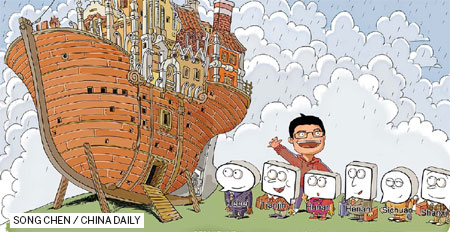
(China Daily Africa Weekly 12/13/2013 page24)

